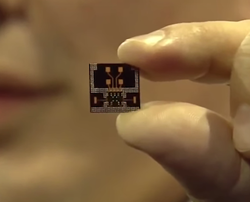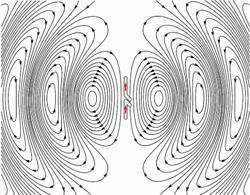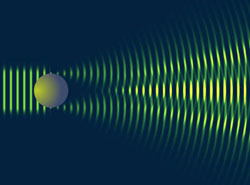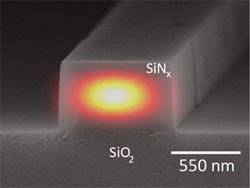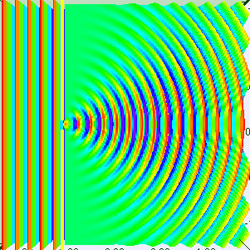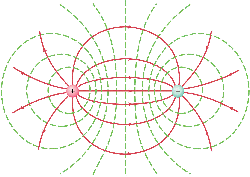ECE 3030 Contents
Syllabus and Course Details
Lecture Notes and Handouts
Homework and Exams
Note: Projects and Labs are not available for this course.
Lecture Notes and Handouts
- Handout 1 [PDF]: Applications of electromagnetic fields and waves in industry and research.
- Handout 2 [PDF]: Maxwell’s equations in integral and differential forms, electrostatics and magnetostatics, electroquasistatics and magnetoquasistatics.
- Handout 3 [PDF]: Electrostatics, applications of Gauss’ Law in problem solving, applications of the superposition principle in problem solving, some simple charge distributions.
- Handout 4 [PDF]: Electric scalar potential, Poisson equation, Laplace equation, superposition principle, problem solving.
- Handout 5 [PDF]: Electrical conduction and perfect metals in electroquasistatics, solution of Laplace and Poisson equations with metal electrodes, boundary conditions, dielectric relaxation, image charges and method of images.
- Handout 6 [PDF]: Capacitance, problems in Cartesian, Cylindrical and Spherical coordinates.
- Handout 7 [PDF]: Material polarization, polarization charge and current densities, mathematics of polarization in electromagnetism, dielectrics vs conductors, boundary conditions.
- Handout 8 [PDF]: Problems and examples involving material polarization, dielectrics, and boundary conditions.
- Handout 9 [PDF]: Magnetoquasistatics, Ampere’s law, the vector potential, the vector Poisson equation, Biot-Savart law, magnetic fields of some simple current distributions, magnetic flux and the vector potential.
- Handout 10 [PDF]: Magnetoquasistatics in the presence of perfect metals, boundary conditions, method of images, inductance, inductances of some simple structures.
- Handout 11 [PDF]: Faraday’s Law and electromagnetic Induction, non-uniqueness of voltages in magnetoquasistatics, current-charge continuity equation in electromagnetism, power-energy continuity equation in electromagnetism, Poynting’s vector, electromagnetic energy and power flow and connection with electrical circuit theory.
- Handout 12 [PDF]: Energy, forces, and work in electromagnetics, forces between charged dielectrics and conductors, electromagnetic energy, forces, and work in closed systems and systems connected to voltage sources.
- Handout 13 [PDF]: Electromagnetic wave equation, uniform plane wave solutions, Poynting vector.
- Handout 14 [PDF]: Time-harmonic electromagnetic fields, phasors, complex version of Maxwell’s equations, complex Poynting vector.
- Handout 15 [PDF]: Polarization states of plane waves, linearly polarized waves, circularly polarized waves, elliptically polarized waves, left-hand and right-hand circularly (or elliptically) polarized waves.
- Handout 16a; Handout 16b [PDF]: Wave propagation in isotropic media; dielectrics and conductors, plasmas, dispersive media, wave packets, phase and group velocities.
- Handout 17 [PDF]: Wave propagation in anisotropic media, biaxial media, uniaxial media, half-wave plates, quarter-wave plates, birefringence.
- Handout 18 [PDF]: Wave reflection and transmission at media interfaces, reflection and transmission coefficients, standing waves and standing wave ratio.
- Handout 19 [PDF]: Non-normal incidence of waves at media interfaces, phase matching condition, reflection, refraction, Snell’s law, critical angle and evanescent waves, Brewster’s angle.
- Handout 20 [PDF]: Transmission lines, types of transmission lines, fields, voltages and currents on transmission lines, transmission line equations, transmission line dispersion relations, transmission line impedances.
- Handout 21 [PDF]: Impedance transformations in transmission line RF and microwave circuits, equivalent circuit models, short load, open load, matched load, Thevenin equivalent circuit models, power dissipation.
- Handout 22 [PDF]: G-Plane and Smith Charts, load matching and stub tuning, quarter wave transformers.
- Handout 23a [PDF]; Handout 23b [PDF]: CMOS Reflection and transmission for multilayer structures, AR and HR coatings, 1-dimensional photonic bandgap structures, multilayer structures for non-normal incidence (TE and TM waves).
- Handout 24 [PDF]: Time domain analysis of transmission lines, transients.
- Handout 25 [PDF]: Guided waves in parallel plate metal waveguides, TE and TM modes, dispersion characteristics and cut-off frequencies.
- Handout 26 [PDF]: Guided waves in dielectric slab waveguides, TE and TM modes, dispersion characteristics and cut-off frequencies.
- Handout 27 [PDF]: Guided waves in rectangular metal waveguides, TE and TM modes, dispersion characteristics and cut-off frequencies.
- Handout 28 [PDF]: Radiation by time-varying currents and charges, retarded potentials in time-domain and for time-harmonic fields, wave equations for vector and scalar potentials, Hertzian dipoles, near- and far-fields, Poynting vector.
- Handout 29 [PDF]: Hertzian dipoles, near- and far-fields, Poynting vector, antenna gain, radiation pattern, radiation resistance.
- Handout 30 [PDF]: Hertzian dipoles, superposition principle for more than one Hertzian dipoles, gain and radiation pattern for two-element array of Hertzian dipoles.
- Handout 31 [PDF]: Radiation from linear wire antennas, short-dipole, half-wave dipole, three-half-wave dipole, radiation from wire loop antennas, electric vs magnetic dipole antennas.
- Handout 32 [PDF]: Circuit properties of transmitting antennas, antenna self-impedance and trans-impedance, receiving and transmitting antennas, antenna effective area, reciprocity and antenna theorem.
- Handout 33 [PDF]: Antenna arrays, element factor and array factor, linear antenna arrays, phase arrays, binomial arrays, radiation patterns.
- Handout 34 [PDF]: Electromagnetic scattering, Rayleigh scattering, scattering from a dielectric sphere, scattering-cross section and scattered radiation, scattering of sunlight in the atmosphere (why the sky is blue), radars, radar range equation.
- Handout 35 [PDF]: Aperture antennas and electromagnetic diffraction, Fraunhoffer diffraction, rectangular apertures – radiation pattern and gain.
- Handout 36 [PDF]: Reflector antennas, dish antennas, parabolic dish antennas
